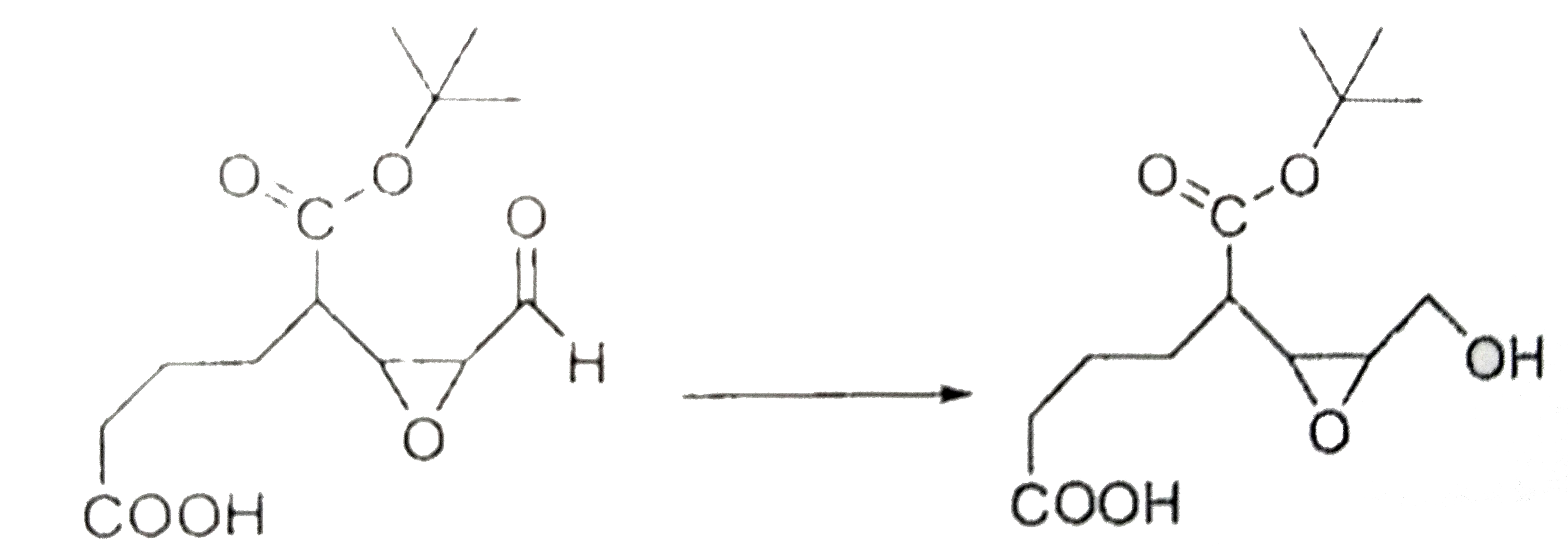Give the names of the reagents to bring about the following transformations.
(i) p-Fluorotoluene to p-fluorobenzaldehyde.
(ii) Ethanenitrile to ethanal.
To solve the transformations given in the question, we will identify the reagents needed for each conversion step by step.
Transformation (i): p-Fluorotoluene to p-Fluorobenzaldehyde
1. Identify the starting compound: The starting compound is p-Fluorotoluene, which has a fluorine atom at the para position relative to the methyl group on the benzene ring.
2. Determine the target compound: The target compound is p-Fluorobenzaldehyde, which requires the methyl group (–CH3) to be converted into an aldehyde group (–CHO).
3. Select the reagent for oxidation: To convert the methyl group to an aldehyde, we can use chromic oxide (CrO3) as the oxidizing agent. This reagent will facilitate the oxidation of the methyl group to an aldehyde.
4. Reaction conditions: The reaction is typically carried out at a temperature range of 273 to 283 Kelvin.
5. Final step: After the oxidation, we need to ensure that the resulting compound is p-Fluorobenzaldehyde. The reaction with CrO3 will yield the desired product.
Reagents needed:
- CrO3 (Chromic oxide) for oxidation.
Transformation (ii): Ethanenitrile to Ethanal
1. Identify the starting compound: The starting compound is ethanenitrile (CH3C≡N), which contains a nitrile group (–C≡N).
2. Determine the target compound: The target compound is ethanal (CH3CHO), which is an aldehyde.
3. Select the reagent for conversion: To convert the nitrile to an aldehyde, we can use stannous chloride (SnCl2) in the presence of hydrochloric acid (HCl). This is known as the Stephan's reaction, which reduces the nitrile to an aldehyde.
4. Hydrolysis step: After the reaction with SnCl2 and HCl, hydrolysis will yield ethanal.
5. Alternative method: Another method to achieve this conversion is by using DIBAL-H (Diisobutylaluminum hydride) followed by hydrolysis, which can also convert the nitrile directly to the aldehyde.
Reagents needed:
- SnCl2 (Stannous chloride) in the presence of HCl for the first method, or
- DIBAL-H followed by hydrolysis for the alternative method.
Summary of Reagents:
- (i) p-Fluorotoluene to p-Fluorobenzaldehyde: CrO3
- (ii) Ethanenitrile to Ethanal: SnCl2 + HCl or DIBAL-H + H2O
- CrO3 (Chromic oxide) for oxidation.
- SnCl2 (Stannous chloride) in the presence of HCl for the first method, or
- DIBAL-H followed by hydrolysis for the alternative method.
- (i) p-Fluorotoluene to p-Fluorobenzaldehyde: CrO3
- (ii) Ethanenitrile to Ethanal: SnCl2 + HCl or DIBAL-H + H2O
Topper's Solved these Questions
- BOOK - PRADEEPCHAPTER - ALDEHYDES, KETONES AND CARBOXYLIC ACIDS EXERCISE - COMPETITION FOCUS JEE (MAIN AND ADVANCED)/MEDICAL ENTRANCE SPECIEAL (ASSERTION-REASON TYPE QUESTIONS) Type - II14videos
ALDEHYDES, KETONES AND CARBOXYLIC ACIDS
- BOOK - PRADEEPCHAPTER - ALCOHOLS, PHENOLS AND ETHERSEXERCISE - IMPORTANT QUESTIONS FOR BOARD EXAMINATIONS.29videos
ALCOHOLS, PHENOLS AND ETHERS
- BOOK - PRADEEPCHAPTER - APPENDIXEXERCISE - MODEL TEST PAPER <br> (Section C )15videos
APPENDIX
Similar Questions
Knowledge Check
- Question 1 - Select One
The reagent which can best bring about the following transformation is
 ALiAlH4BAl[CH3)2CHO]3CZn(Hg)−HClDNaBH4
ALiAlH4BAl[CH3)2CHO]3CZn(Hg)−HClDNaBH4 - Question 2 - Select One
Name the reagent used to bring about the following transformation, but-2-ene to ethanol:
AK2Cr2O7 in acidic mediumBCrO2Cl2/H3O+CPCCDO3/H2O−Zn dust and LiAlH4 - Question 3 - Select One
Which reagent brings about the following conversion ?
 ABr2,Cl4BBr2,H2OCNaBrDPBr_3
ABr2,Cl4BBr2,H2OCNaBrDPBr_3
Which of the following reagents will bring about following transformations?
 View Solution
View SolutionGive names of the reagents to bring about the following transformations:
(i) Hexan-1-ol to hexanal
(ii) Cyclohexanol to cyclohexanone
(iii) p-Fluorotoluene to
(iv) Ethanenitrile to ethanal p-fluorobenzaldehyde
(v) Allyl alcohol to propenal
(vi) But-2-ene to ethanalView SolutionReagent(s) which can be used to bring about the following transformation is(are)
 View Solution
View SolutionFind the reagent used to bring about following conversions.
 View Solution
View SolutionReagent (s) which can be used to bring about the following transformation is (are)
 View Solution
View Solution

